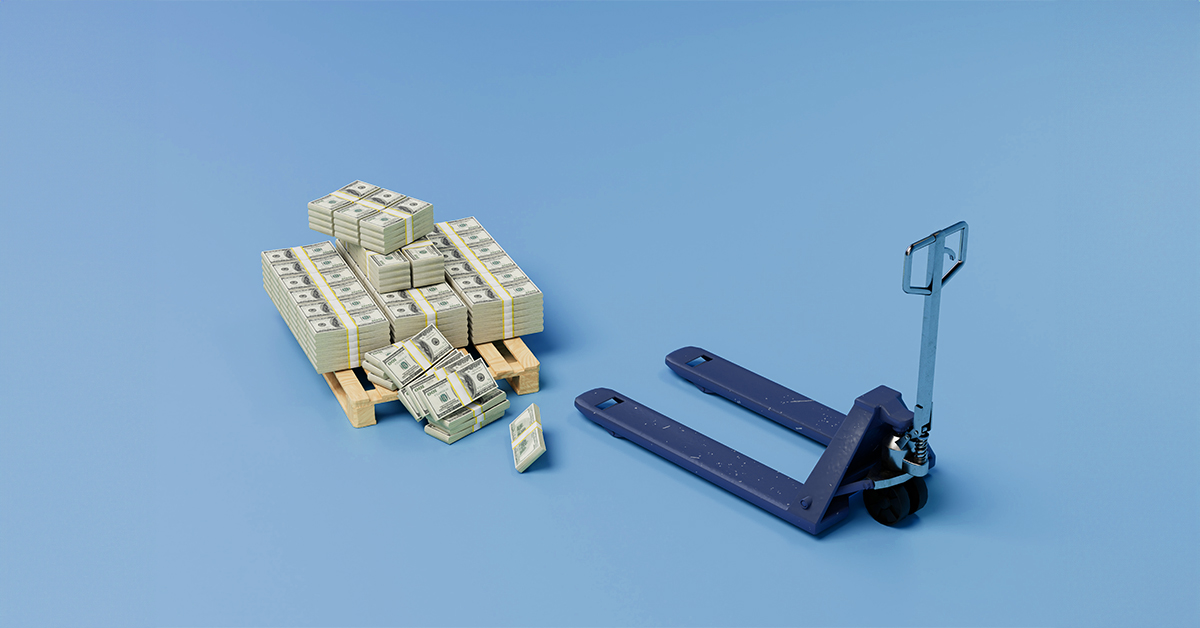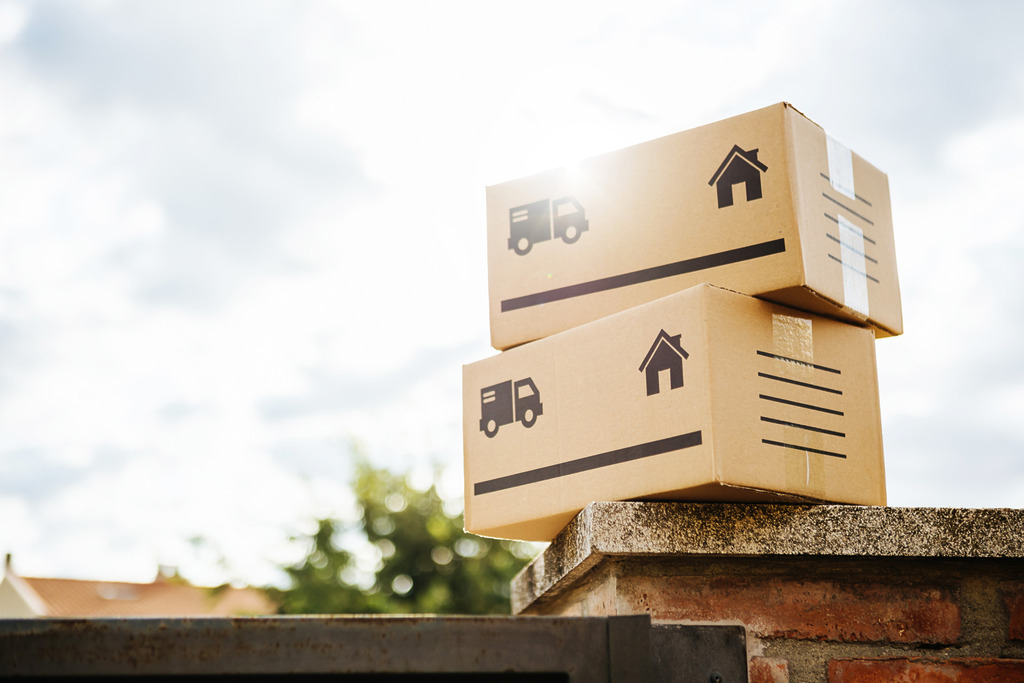Table of Contents
ToggleNavigating Amazon’s marketplace can be both an exciting and complex experience. At the heart of this growing e-commerce giant is the Fulfilment by Amazon (FBA) programme. This service allows Amazon sellers to take advantage of Amazon’s extensive logistics network to store, pick, pack and ship their products, and handle returns and exchanges.
As Amazon continues to dominate the e-commerce ecosystem, understanding all aspects of Amazon FBA fees is crucial for any seller aiming to grow their e-commerce business. From monthly storage fees and handling costs, to shipping and long-term storage charges, each fee impacts your bottom line.
Not only do these fees affect how you set prices and profitability for your business, but they also play a crucial role in how you manage inventory and make operational decisions.
Read on to learn more about the various costs associated with selling on Amazon through FBA.
Table of Contents
ToggleUnderstanding Amazon FBA fees: where to begin
Signing up to Amazon FBA comes with some great advantages, like making your business Amazon Prime eligible in the countries where your goods are stored.
Opting for FBA seems like a no-brainer – that Amazon Prime badge is a highly attractive benefit, as it increases product visibility and has the potential to increase your sales. But there are a number of fees that you may not be aware of at first:
- Fulfilment fees: the cost of picking, packing, shipping and handling customer service and returns. The fees are based on the product size and weight, and are charged per unit. There are different rates for standard and oversize items.
- Monthly inventory storage fees: charged for storing your products in its fulfilment centres, and based on the volume that your inventory occupies in the warehouse. Rates for storage fees vary depending on the season, which are usually higher in the Q4 period (October to December) due to the increase in demand for storage during the holiday season. Rates are charged in cubic feet.
- Returns processing fees: charged for product categories that offer free returns (mainly clothing and shoes). This fee is roughly the same as the original fulfilment fee for the product.
- Long-term storage fees: charged for items stored over 365 days. They were introduced because Amazon wants to encourage all sellers to keep their inventory selling. Long-term storage fees are charged in addition to the monthly inventory storage fees.
- Removal order fees: charged if you plan to remove your inventory from a fulfilment centre. Amazon will charge you a per unit fee to return the item to you, or dispose of it. This fee is based on the size and weight of the product.
Other FBA fees to consider
- High-volume listing fees may be applied for Amazon sellers with a high number of Stock Keeping Units (SKUs) and low sales volumes. This is to encourage sellers to maintain listings that are more likely to sell.
- Unplanned service fees may be charged if your inventory arrives at an Amazon fulfilment centre without proper labelling or packaging. This is to cover the additional handling required.
What you need to know about FBA fees, at a glance
- The exact costs associated with each of these fee types can vary. This is usually based on several factors, including the size and weight of the item, the category of the product, and the time of year.
- It’s important to closely monitor all inventory levels, and fees being charged, to ensure the FBA programme remains cost-effective for your business.
- Before sending your products in to an Amazon fulfilment centre, estimate your fees using Amazon’s detailed fee schedules and calculators.
How Amazon FBA fees are calculated
There are several factors that affect FBA fees, and these can influence how much Selling Partners pay for the service. Understanding these factors is crucial to effectively manage your costs and pricing strategies, and depending on what you sell, they can be:
- Product size and weight: The dimensions and weight directly affect the cost of both fulfilment fees and storage fees. Amazon categorises products into different sizes, such as: small standard-size, large standard-size, small oversize, large oversize and so on. Fees vary across these tiers, but generally, the larger and heavier the product, the higher the fee for storage and fulfilment.
- How long you keep your inventory in their storage: The length of time your inventory is stored in an Amazon fulfilment centre affects the monthly storage fees, which are calculated based on the amount of space your inventory takes up.
- Product type: Some product categories have different fee structures, particularly when it comes to handling and processing. For example, clothing and shoes may have specific fees relating to processing returns, as Amazon offers free return shipping on these categories.
- Shipping method and destination: Amazon takes care of negotiating shipping rates and handling the logistics of delivering products to customers for you, but the cost to ship items can vary depending for large or heavy items. These in turn affect the overall fulfilment fees for Amazon sellers.
- Seasonality: During exceptionally busy periods, particularly around the peak holiday season and Q4, the increase in demand for storage and fulfilment can increase storage fees at these times.
- Inventory management: How you manage your inventory also has an impact on fees. For example, you can reduce FBA costs with efficient inventory management. Poorly managed inventory could cause higher storage fees and increase your long-term storage costs.
This list doesn’t cover everything, but it does show that by carefully considering all the factors affecting FBA fees, you can reduce and minimise the costs associated with the FBA programme for your Amazon business.
Using the Amazon FBA calculator
Amazon makes it easier for sellers to weigh up the costs of fulfilling orders through their FBA programme. Using tools such as their FBA Revenue Calculator helps you to accurately predict the costs for fulfilling your stock by this method, and you can try it even if you’re not signed up yet as an Amazon seller.
Try out the calculator (amazon.co.uk)
If you already sell though Amazon FBA, you can track the fees that you’re paying to Amazon by using the detailed reports in your Seller Central dashboard.
The calculator and the dashboard will help you to track the fees you are paying to Amazon, and will assist with your business’ decision-making regarding pricing, inventory management, and your overall selling strategy on Amazon.
Case study: examples of FBA fee calculations
When looking into your costs, you need to complete an honest cost analysis, taking into account your product cost, shipping, Amazon commission, VAT and fulfilment fees. This is also known as your Cost of Goods Sold (COGS).
Here’s an example* from a client who sells shoes in Amazon’s EU marketplaces in Germany, France, Italy and Spain:
| Country | Product cost/unit (€) | Shipping cost/unit (€) | Amazon Commission (15%) | VAT (€) | Fulfilment fee/unit (€) | Total cost (€) | Profit margin |
|---|---|---|---|---|---|---|---|
| Germany | 6.00 | 3.00 | 5.25 | 5.59 | 25.42 | 9.58 | 27% |
| France | 6.00 | 3.00 | 5.25 | 5.83 | 27.05 | 7.95 | 23% |
| Italy | 6.00 | 3.00 | 5.25 | 6.31 | 27.34 | 7.66 | 22% |
| Spain | 6.00 | 3.00 | 5.25 | 6.07 | 25.86 | 9.14 | 26% |
*This COGS example doesn’t include any advertising fees.
The cost of Amazon FBA versus other selling methods
Aside from FBA, Amazon offers a variety of other selling models to suit the needs of any e-commerce business. You can choose how involved you are in the fulfilment process, depending on how that fits your business’ operational capability and goals.
What are Amazon’s main alternatives to FBA?
- Fulfilment by Merchant (FBM): You are responsible for storing inventory, picking, packing, shipping, handling customer service and managing returns for any orders.
- Seller Fulfilled Prime (SFP): You are responsible for fulfilling orders from their own facilities, while also displaying the Prime badge. To qualify, you must demonstrate that you can meet the Amazon Prime delivery standard.
- Drop-shipping: You list the product on Amazon without holding inventory, then you buy the product from a third party when an order is placed. The third party then ships directly to the customer.
- Multi-channel fulfilment (MCF): Sellers using FBA can also use Amazon’s MCF to fulfil orders from other sales channels outside of Amazon, such as their own websites or other marketplaces.
Each of these models has different pros and cons.
Important considerations for FBA sellers
Understand your Sales Tax and VAT obligations
When considering your FBA strategy, remember that taxes vary depending on the country, or the state (if you’re selling in the USA), in which you are selling and storing goods.
Understanding and complying with these tax laws and regulations will ensure that you avoid fines and penalties, and maintain smooth operations across different jurisdictions.
Think about requirements in the USA and sales tax
Are you thinking about selling to customers in the USA? You’ll need to know whether you’ve established a nexus. A nexus is a presence in a state that will require you to collect and remit sales tax in that state.
As Amazon FBA creates a physical presence for sellers, due to their inventory being stored in Amazon’s fulfilment centres, this could establish a nexus in multiple states.
Many states have laws that require online marketplaces such as Amazon to collect and remit sales tax on behalf of their sellers. However, you’re still responsible for monitoring your taxes and filing returns – but that’s something AVASK can help with.
Learn more about how AVASK can help you with selling into the USA.
Value Added Tax (VAT) for international sales (UK and EU)
Conversely, if you’re selling in the UK and EU, sellers exporting goods or storing inventory in another country may need to register for VAT. The rates vary by country, so understanding the specific VAT requirements is essential for compliance.
When sending inventory to other countries, or importing foods, you’ll also need to be aware of import duties and customs procedures, which may affect the overall cost and your pricing strategies for products.
Managing taxes and VAT is a complex aspect of running an FBA business, especially for e-commerce businesses operating across multiple jurisdictions. It’s advisable to seek professional advice to navigate these requirements effectively. AVASK can help you find out about your business’ requirements under US, EU and UK tax law and optimise your tax strategy.
What to consider when incorporating FBA fees into product pricing
Incorporating FBA fees into product pricing requires a careful balance between covering costs, staying competitive, and being profitable. Understand all the costs, and continually review and update your pricing, so that you can set and maintain prices that attract customers, while also sustaining a healthy profit margin.
Watch our video ‘Do you know what Amazon Programmes are available in Europe?’
Amazon FBA: your key takeaways
- Make sense of the complex FBA programme to help grow your business with Amazon’s vast fulfilment network.
- Understand and accurately calculate FBA fees so that your pricing is both competitive and profitable.
- Compare the costs of FBA against other selling methods so you can make an informed choice about which fulfilment option best aligns with your business’ goals.
- Get expert professional advice on the important essentials like international VAT and tax requirements, and inventory management, so you can scale your operations.
- Use FBA fees as part of your pricing strategy – it’s not just about simply covering costs, but more about crafting a strategy that supports sustainable growth for your business.
- Be proactive – regularly review analytics and technology tools to make data-driven decisions and achieve success with FBA.
Whether you’re just starting out, or looking to optimise your existing FBA operations, AVASK can help you to make the most of this powerful tool to expand your e-commerce business cross-borders.









